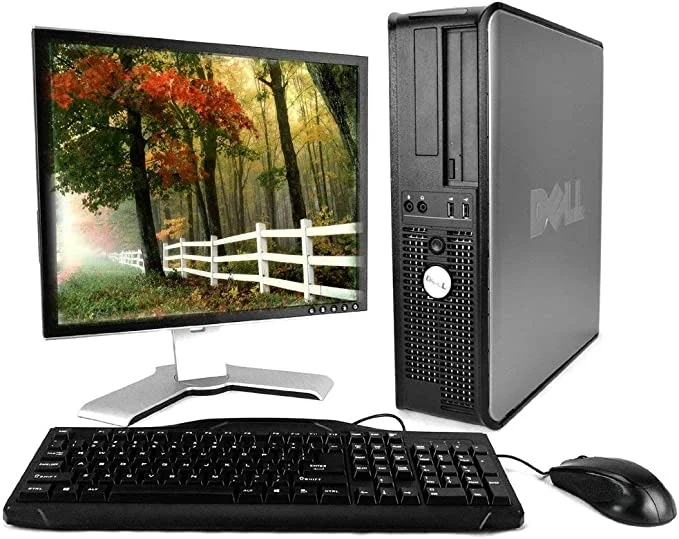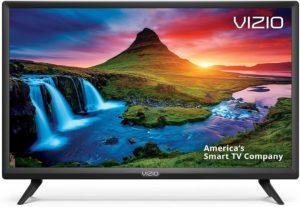How to Choose a Electric Range

Once you’ve decided on an electric range type, consider the following factors to zero in on a model that fits your floor plan and cooking needs.
Freestanding vs. Slide-In Electric Ranges
Freestanding electric ranges are the most widely sold and easiest to install. The controls are on a panel at the far end of the range. Slide-in ranges slip in between cabinets and appliances to give a custom, built-in look. Controls sit at the front of the range, so your backsplash can be showcased. The sides might not come finished, though, so a slide-in range might not work well as a replacement for a freestanding unit.
Oven Capacity
A roomy oven comes in handy when baking or entertaining. So, assess the oven cavity in person if you can, or check the capacity scores in our range ratings. We measure only the usable oven space—while some manufacturers advertise dimensions that include the space below the lowest rack position.
Single-Oven vs. Double-Oven Ranges
Many ranges now come in single- and double-oven configurations. Double-oven ranges often have a smaller oven up top and a larger one below. They’re great for baking or roasting two different foods at two different temperatures. What’s more, you can activate just the smaller upper oven to save time on preheating for small items, like a pizza. However, you’ll need to bend farther down to cook foods in the lower oven because the door for the larger oven is closer to the floor than that of a conventional oven. To explore other issues concerning double ovens (such as the absence of a storage drawer), see our breakout guide on double ovens.
Gas vs. Dual-Fuel Ranges
Some gas ranges are dual-fuel—they use gas for the cooktop and electric power for the oven. Electric ovens tend to be dryer and more even in their heating. The downside is that you’ll need both gas and a 240-volt power hookup because you’re using both systems at once.
Showing 1–48 of 92 results
-

EASYROSE 24 Inch Gas Range 4 Burner Heavy Duty Ranges With Oven, Commercial Range for Kitchen Restaurant – 150,000 BTU, ETL Certified
$1,659.99 Learn More -

FFEF3054TS 30 Freestanding Electric Range with 5.3 cu. ft. Capacity 2 Oven Racks Storage Drawer 5 Heating Elements and Self Clean Function in Stainless Steel
$978.82 Learn More -

SAMSUNG,NE63T8311SG 6.3 Cu. Ft. Black Stainless Front Control Slide-In Electric Range with Convection & Wi-Fi
$899.00 Learn More -
Sale!

Verona Prestige Series VPFSEE365SS 36 Inch All Electric Freestanding Range Oven 4 cu. ft. Convection, 5 Burners Dual Center Element Chrome Knobs and Handle Stainless Steel
Original price was: $3,299.00.$2,199.00Current price is: $2,199.00. Learn More -
Sale!

Frigidaire 24 in. 1.9 Cu. Ft. Electric Range in White with Hidden Bake, ADA Compliant
Original price was: $999.00.$899.00Current price is: $899.00. Learn More -

Frigidaire FCRE3052AS 30″ Freestanding Electric Range with 5.3 cu. ft. Capacity Quick Boil Store-More Storage Drawer and SpaceWise Expandable Elements in Stainless Steel
$849.00 Learn More -

Avanti ERU200P3S ERU200 20″ Electric Range Oven with Framed Glass Door, in Stainless Steel
$845.12 Learn More -

Avanti ERU240P1B ERU240 24″ Electric Range Oven with Framed Glass Door, in Black
$696.37 Learn More -
Sale!

Kenmore Front Control Electric Range Oven with 5 Cooktop Elements with 7 Cooking Power Options, True Convection, Steam and Self Clean, Freestanding Oven, 4.8 cu. ft. Capacity Stainless Steel
Original price was: $1,299.99.$1,199.99Current price is: $1,199.99. Learn More -

THOR Kitchen Professional 36-Inch Electric Range in Stainless Steel – Model ARE36
$2,199.00 Learn More -

Karinear 2 Burners Electric Cooktop 24 Inch, 110v~120v Countertop and Built-in Elecric Stove Top, Portable Electric Radiant with Outlet Plug, Sensor Touch, Child Safety Lock, Timer
$169.99 Learn More -
Sale!

GE JB735SPSS 5.3 Cu. Ft. Freestanding Electric Convection Range with Hot Air Frying
Original price was: $1,049.00.$899.00Current price is: $899.00. Learn More -

Premium Levella 20″ Electric Range with 4 Coil Burners and 2.2 Cu. Ft. Oven Capacity in Black
$729.82 Learn More -

KOSTCH 30 inch Professional Electric Range with 5 Heating Elements Cooktop, 4.55 Cu. Ft. Convection Oven Capacity, Smooth Glass Top, in Stainless Steel, KOS-30RE06H (Stainless Steel)
$2,199.00 Learn More -

Stainless Steel Gas Stove Top Cover, Noodle Board Cooktop Cover, Kitchen Organizer for Gas and Electric Stove Range Expanding Kitchen Space, Large Size 30″x 22″x3″, Black
$119.99 Learn More -

KoolMore 36 Inch All-Electric Range Oven with Ceramic Cooktop Burners, Stainless Steel Kitchen Stove with Large Capacity Convection Cooking, 4.3 cu. ft. (KM-FR36EE-SS)
$1,999.00 Learn More -

THOR Kitchen Freestanding Professional 30-Inch Dual Fuel Range in Stainless Steel – Model HRD3088U
$2,209.00 Learn More -
Sale!

VBGK Electric cooktop 30 inch,240V 7200W Electric Stove 4 burner,Built-in and Countertop Electric Stove Top, LED Touch Screen,9 Heating Level, Timer & Kid Safety Lock, Touch Control
Original price was: $219.99.$199.99Current price is: $199.99. Learn More -

Hobsir hob 2 Burner Electric Cooktop, 110v Electric Burner Stove Top 12 inch Knob Control Countertop & Built-in Radiant Electric Stove with Residual Heat Indicator, Over-Temperature Protection
$159.99 Learn More -

Karinear Electric Cooktop 110V, 12” Stainless Steel Built-in and Countertop Electric Stove top 2 Burners with Knob Control, 16 Power Levels,Over-Heat Protection, Electric Ceramic Cooktop with Plug in
$146.99 Learn More -

Hot Plate, Techwood 1800W Electric Stove, Countertop Double Burners for Cooking, Infrared Ceramic Dual Cooktops, Brushed Stainless Steel, Black
$93.99 Learn More -

KitchenRaku Large Induction Cooktop Protector Mat 20.4 x 30.7 inch, (Magnetic) Electric Stove Burner Covers Antiscratch as Glass Top Stove Cover or Electric Stove Top
$37.99 Learn More -

Karinear 110v Electric Cooktop 2 Burners, 12” Electric Stove Top with Plug in, Knob Control Countertop & Built-in Ceramic Cooktop, 9 Heating Level, Hot Warning, Over-Temperature Protection
$169.99 Learn More -

Cooksir Electric Cooktop 2 Burner, Plug in Electric Stove Top Stainless Steel 110V, Hot Surface Indicator, Overheat Protection, Ceramic Cooktop with 2 Knob Control, Portable Countertop 12 inch
$144.99 Learn More -

Karinear Electric Cooktop 30 Inch, 4 Burners 7100W Built-in Radiant Electric Stove Top, Ceramic Cooktop with Glass Protection Metal Frame, Kid Safety Lock, Timer, Pause,220-240v Hard Wire, No Plug
$329.99 Learn More -
Sale!

Empava 2 Burner infrared Cooktop, 3000W Built in Electrical Stove Top for Kitchen 208~240V Hard Wired, No Plug, ETL Certified, Black, 12 inch
Original price was: $222.41.$159.68Current price is: $159.68. Learn More -

Jessier 12 Inch Electric Cooktop – 2 Burner Countertop & Built-in Electric Stove Top, 120V Plug in Electric Cook Top, Timer, Safety Lock, Over-Temperature Protection, Sensor Touch Control
$159.99 Learn More -

Cook’s Aid Induction Cooktop Protector Mat 20.4×30.7 In, (Magnetic) Electric Stove Burner Covers Antiscratch as Glass Top Stove Cover (20.4×30.7 In, Black)
$38.99 Learn More -
Sale!

Electric Cooktop, 24 Inch 2 Burner Electric Cooktop 110V, Built-in and Countertop Electric Stove Top Plug in, 2400W Electric Stove, Compatible for All Cookware,Timer & Kid Safety Lock
Original price was: $159.99.$132.99Current price is: $132.99. Learn More -

ECOTOUCH 9600W 36 Inch Electric Cooktop 5 Burners,Built-in,ETL & FCC Certificated,Quick Boil,Dual Triple Ring,Hot Surface Indicator,36″ Ceramic Glass Radiant Electric Stove Top,220-240v,Hard Wire
$499.99 Learn More -

Double Induction Cooktop Burner, 1800w 2 burner Induction Cooker Cooktop, 10 Temperature 9 Power Settings Portable Electric Countertop Burner Touch Stove with Child Safety Lock & Timer
$130.49 Learn More -
Sale!

Summit REX2051WRT 20″” Freestanding Electric Range with 4 Elements 2.3 cu. ft. Oven Capacity Smooth Ceramic Glass Top ADA Compliant Hot Surface Indicator in White
Original price was: $935.00.$876.09Current price is: $876.09. Learn More -

Electric Cooktop 30 inch Ceramic Stove 4 Burners Built-in Stove Top Electric Hot Plate Satin Glass cooktop in Black, Control by Knob/Timer/Child Safety Lock/9 Power Levelsr/220-240V 6700W
$219.99 Learn More -
Sale!

ChangBERT Induction Cooktop, Commercial Grade Portable Cooker, Large 8â Heating Coil, 18/10 Stainless Steel Countertop Burner with NSF Certified, 10 Hours Timer, Powerful 1800W Professional Hot Plate
Original price was: $159.99.$99.99Current price is: $99.99. Learn More -

Verona Prestige Series VPFSEE365DSS 36 Inch All Electric Freestanding Range Double Oven Convection, Cooktop 5 Burners Dual Center Element Chrome Knobs and Handle Stainless Steel
$3,699.00 Learn More -

GE JD630SFSS Electric Smoothtop Range Oven
$1,999.98 Learn More -

Summit REX2421WRT 24 Electric Range with 4 Elements Ceramic Glass Cooktop 2.9 cu. ft. Oven Capacity Storage Drawer Adjustable Racks ADA Compliant in White
$972.83 Learn More -

Electric Cooktop, 110v Electric Stove Top 12 inch, Electric Cooktop 2 Burners 2100W, Independent Control 20 Temperature Ranges 9 Power Levels Induction Cooktop, All Kinds of Cookwares
$139.99 Learn More -

Summit Appliance RE203W 20″ Wide Electric Coil Range, 4-Burner, Porcelain Interior, Chrome Drip Pans (White, 20-Inch)
$666.30 Learn More -

KitchenRaku Large Induction Cooktop Protector Mat 21.2×35.4 IN,Translucent (Magnetic) Electric Stove Burner Covers Antiscratch as Glass Top Stove Cover or Electric Stove Top
$56.99 Learn More -

Stainless Steel Stove Top Cover, Range Burner Cover for Gas/Electric Stove, Noodle Board for 2 Burners RV/Camper/Apartment, Fit for Stove depth less than 20.5″ /Height less than 2.5″, Black Finish
$62.94 Learn More -

36″ Professional Plus Series Freestanding Double Oven Dual Fuel Range with 5 Sealed Burners
$5,924.30 Learn More -

12 inch Gas Cooktop, Gas Stovetop Gas Cooktop 2 Burners Stainless Steel Cas Stove, NG/LPG Convertible, Drop-In Gas Hob
$98.99 Learn More -

Cooksir Electric Cooktop 30 Inch, 7400W Built-in Electric Stove Top 4 Burner, 220-240V Ceramic Hob with Glass Protection Metal Frame, Knob Control, 9 Power Level, Wiring Required, No Plug
$339.99 Learn More -

Cooksir Single Burner Electric Cooktop, Portable One Burner Electric Stove, 1800W Small Infrared Electric Burner with Safety Lock, Timer, Overheat Protection, Touch Control, 110V-120V Plug in
$59.99 Learn More -

VBGK Electric Cooktop, 12 Inch Built-in Radiant Electric Stove Top, 110V 2100W Electric Stove with 2 Burners, 9 Heating Level, Timer & Kid Safety Lock, Sensor Touch Control Double Induction Cooktop
$159.99 Learn More -

Nuwave PIC Double, Portable, Powerful 1800W with 2 Large 8” Heating Coils, Independent Controls, 94 Temp Settings from 100°F to 575°F in 5°F Increments, 11.5” Shatter-Proof Ceramic Glass Surface
$229.99 Learn More -

NXR SCD4811LP 36 in. 7.2 cu.ft. Professional Style Dual Fuel Liquid Propane Range with 6 burners & Electric Convection Oven in Stainless Steel
$3,999.00 Learn More




















































